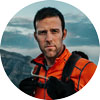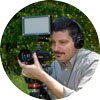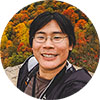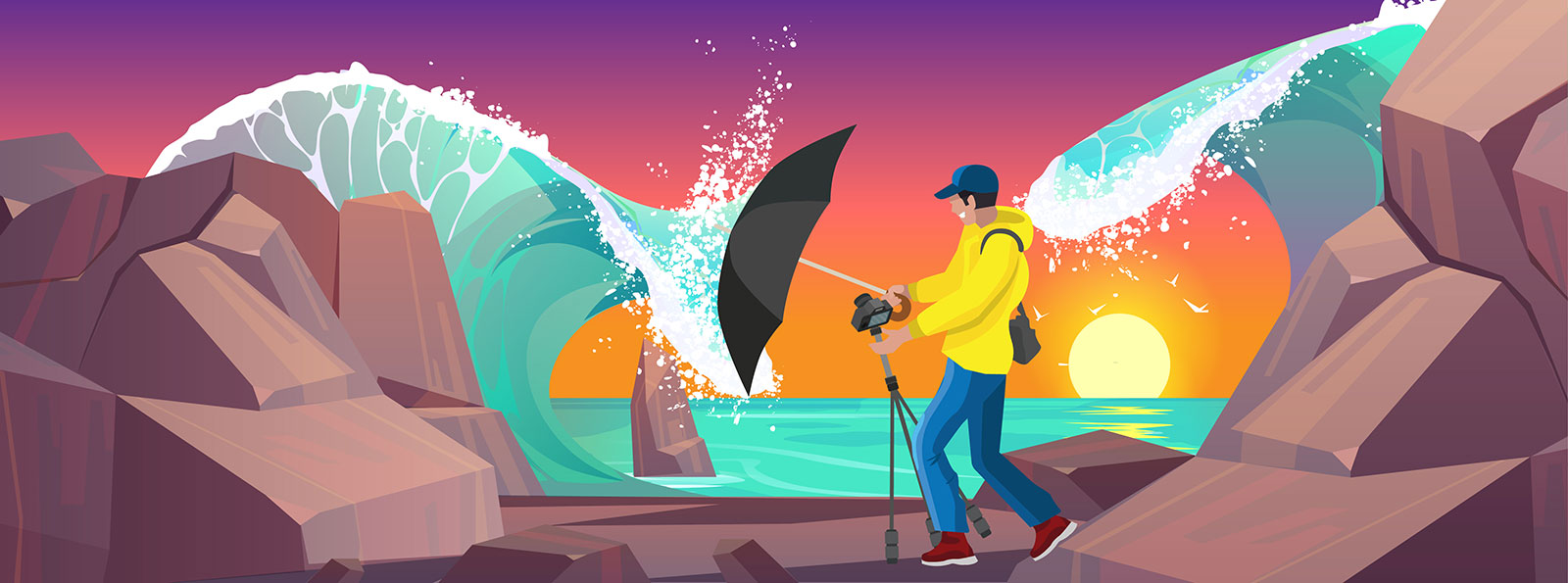25+ Landscape Photography Tips from Pro Photographers
As a beginner photographer, or even as an experienced veteran, capturing a truly unique and awe-inspiring landscape photo can take a lot of time, skill, and practice. With the millions of landscape photos popping up on Instagram every day, landscape photography is one of the most popular genres and it can be tough to stand out.
That’s why we reached out to over 25 professional photographers to get their take on how to capture better photos. We asked them:
“What’s the number one tip you can give aspiring (or even more advanced) photographers to improve their landscape photography skills and/or capture more professional/creative shots?”
We received some amazing responses encompassing a variety of techniques such as properly preparing for the shoot, choosing the right gear, finding the perfect location, utilizing your senses, and more.
This article lists their answers in detail to help you improve your landscape photography skills!
We’ve broken their responses down by sections, so you can read their answers from start to finish, or “jump” to the section you’re most interested in:
- Have a Plan & Be Prepared
- Choose the Right Camera Gear
- Optimize Your Camera Settings
- Find the Perfect Location
- Utilize Your Senses
- Set the Scene
- Search for Depth
- Compose Your Shot
- Push Your Boundaries
Have a Plan & Be Prepared
I have spent the last 10 years traveling the world in search of the most beautiful landscapes. The most important lesson that I have learned is not necessarily where I am going but how I approach the landscape.
1. Find the landscape
The whole world is full of landscape, it’s what the globe is made up of. There are some that are absolutely stunning and others that are completely cluttered and uninteresting. When searching for a landscape, begin looking in your own backyard. What I mean by that is see what natural features are around you.
When I first started in photography I thought I had to go to the other side of the world in order to find beauty. Now that I look back, I have found the most beauty in places as close as Big Sur, the Utah Desert, and the Pacific Northwest, so no matter where you are you can find beauty. Look for waterfalls, peaks, rivers, pristine lakes, jagged cliffs, deep canyons, vast deserts, etc.
2. Create a shot list
Once you have a location, begin to concept how you want to capture it. I do lots of research on 500px to find out how others have captured similar landscapes. I look for what others have shot…not to copy them but to in a way collaborate and to see what inspiration I can add to my vision.
When you are planning, think of new or different ways to capture your landscape. Try to concept a shot that is unique or ironic. Don’t be afraid to test something out or make mistakes. The way I see it, it’s better to take 30 different shots and have five turn out killer than just stick to the two shots you know will look good. If you feel outside of your comfort zone, then you’re in a good place!
3. Preparation
This is one of the most important steps. Without properly preparing, you can leave yourself open to missing opportunities to capture photos and it will eat up precious time on a trip. To begin, my studio and I use Google Map Engine to build out detailed maps of the locations that we are planning to capture. You can add destinations, location images, and details about accommodations or food along the way.
Packing correctly also will help you optimize your traveling space. Make sure the essentials are always available. My essentials are my camera kit, a headlamp, multi-tool, light jacket, beanie, and a light tripod. This all usually fits in one of my F Stop camera bags. Having these readily available keeps you ready to take photographs at a moment’s notice.
One last step in preparation is finding out where the sun will set, rise, and where the Milky Way will cross the sky. (Note that the core of the Milky Way is not visible during winter months of the northern hemisphere).
4. Look for more than the postcard angle
I always begin my photographic process by circumnavigating my subject. I look for every angle and every opportunity to view the subject differently. Get higher than the subject, get lower, shoot close and wide, shoot far way and compressed. Shoot with more background or more foreground.
Though I don’t always literally circumnavigate, i.e. traverse around the subject, I always aim to gain an appreciation for the landscape, seek out the details such as brilliant moss rocks, the way the clouds are moving over the land, the way the mountains lead to the water, etc. When I feel like I have fully scouted, I use my shot list and begin seeing how the shots will integrate into the scene.
5. Shoot your subject in multiple lighting scenarios
Back in September, a few buddies and I kayaked 7.5 miles on the completely still Maligne Lake to reach Spirit Island and capture it at different times of day. My favorite times of day to capture a landscape are sunrise, sunset, and under the stars. Each scenario presents different light and a different mood to the photographs.
We arrived after the grueling paddle and because I knew our time there was limited, we began shooting right away to capture the sunset. After capturing the sunset, we scarfed down cliff bars, set up a minimal camp, and got our tripods out when it got dark. The brilliant stars came out and we were so in awe of how beautiful the sky was.
After locking my camera into my tripod I set my exposure to 15” (to make sure the stars stayed sharp), set the aperture to f/4, and ISO to 400. I had not seen too many photos from Spirit Island at night, so I knew it was important to get every variation. Throughout the night I shot images with a tent, without a tent, with a 4-hour start trail, with the stars tack sharp, and a hundred other variations. I was wiped, I got just a few hours of sleep, but I knew I had to get up before the sun rose in order to shoot this landscape at sunrise. As with the first two scenarios, sunrise blew me away. I can confidently say that it is the most beautiful place and I will remember that night we spent at Spirit Island for a long time!
6. Add a human element to the landscape
Once I feel like I have captured the best angles of the landscape, I love to introduce a human element. I did this at Spirit Island, I added a kayaker, a hiker, someone near the tent, and someone jumping into the icy water.
By adding a human element, the landscape was given a sense of scale and it gives whoever is viewing the photo a way to emotionally connect with it. When shooting someone, make sure to give them separation with either color or contrast, whether in the sky, against a body of water, or a background that is not busy. You want to be able to quickly identify them in the photo.

Find out what excites you in the world and take photographs of that subject. If you are passionate about a subject, this usually shines through in the final image or print. Having a good understanding of what you are photographing leads to stronger and more compelling images. This approach helps to show your audience what makes you different from other photographers and is critical to finding your own voice and developing a personal style.

Choose the Right Camera Gear
The ONE tip I would give any photographer is to use a UV filter. This can definitely transform all your shots by getting rid of that bluish tint you can get, especially if you capture landscapes with horizons.
UV filters *may* alter your picture’s sharpness if they are cheap, so I would recommend going with branded ones like Nikon, Hoya, or B&W. The second thing to know about UV filters is that they can protect your lens, even if the front elements are usually the cheapest to replace.
My camera once detached from its harness right on the lens. It broke the UV filter in a million pieces, and my lens didn’t have a scratch. The third thing to know about UV filters is that they can create some slight vignetting effect on your images. Sometimes, it’s better to go without, especially if you’re already using an ND filter to achieve a movement effect.

Landscape photography is magical and if I had any tips for experienced or new photographers out there, I would say that a heavy tripod (stable in the wind) and an understanding of shutter speeds (can add movement to still life) and how important the clouds are; they can define a moment.

Neutral Density filters and polarizing filters are must-have pieces of kit for the landscape photographer. Polarizers are great for eliminating some of the reflections in water and getting more contrast out of your image. (Here’s a neat trick to use in a pinch: hold up a pair of polarized sunglasses in front of your lens if you don’t have your filter handy!) If the sky is too bright, an ND filter will help you balance your exposure.

From Neutral Density filters to color graded (polarized) filters, you have the freedom to play with your surroundings and capture them as you please in a more creative way.
Polarizing filters darken the sky and therefore bring out the blues in contrast to the white of the clouds while Neutral Density filters will allow you to limit the intake of intense/bright light and have you compose slow shutter speed shots to display movement in your take (long exposure). To capture long exposure, you will need a tripod and a remote for your camera to avoid any type of shake.

Optimize Your Camera Settings
Learn how to meter for both front light and backlight to properly expose the shot.
Light metering allows your camera to choose the right combination of ISO, aperture, and shutter speed, in order to achieve balanced exposure for your photo. There isn’t a by-the-book right way to do this – the right way to choose your light metering method has a lot to do with what you are trying to achieve creatively. There are a total of four metering modes available on most modern cameras.
- Spot metering is useful for high-contrast scenes with the subject significantly darker or lighter than the rest of the composition.
- Partial metering is similar to spot metering but a larger area is involved (compared to spot metering’s selected focus point).
- Center-weighted metering is useful when you’re dealing with a subject that highly contrasts with the background. It uses a large round area in the center of the viewfinder and measures its light intensity.
- Evaluative/matrix metering is useful for scenes with little to no contrast. When measuring light intensity, it takes into consideration the entire frame you are pointing at.
My tip is to experiment with the different methods as much as you wish, in order to master making beautiful, well-exposed photos.

Here’s one thing that can quickly take a landscape photographer’s work from good to great: shooting RAW files!
If you’ve shot landscapes before, you’ve probably come across the problem of losing color and detail in the sky of what is otherwise a stunning image. Or, the sky looks great, but the foreground is way too dark. Most people start out shooting JPEG photos, which can look great and don’t necessarily require much editing, but raw files capture so much more information, and they can help you get those skies back.
Shooting RAW and exposing your photo for the sky can help you keep information and color there that you might otherwise lose, without having to lean on extra gadgets like filters for your lenses! It’s easy to get shadow detail back in Photoshop or Lightroom, and you can get a much broader dynamic range and more compelling landscape photos.

My advice for landscape photography would be to slow down your shutter speed because slow shutter speeds slow downtime and blur moving scenes of clouds, waves, water, cars, stars, and more, giving a dreamy look to your images through time-lapse.
To shoot even slower, use a neutral density filter to reduce the light entering the camera and allow for shooting with extremely slow shutter speeds.

Underexpose your shot
With an underexposed photo, you are sure to have all the information of the scene for editing after. It’s easier to brighten and tweak dark areas in a photo, but you cannot darken or retrieve details in white spots anymore, which is the case if your photo is overexposed. Underexposed shots allow you to play more with shadows and structure which allow for stylistic edits.

Find the Perfect Location
I’ve been shooting landscape photos for nearly four years, and my biggest tip is to seek out underrated/unknown locations. Everyone likes to go to all these epic locations they’ve seen on Instagram, but this makes for an unpleasant experience & basic photos.
Part of landscape photography is connecting with the outdoors, and it’s hard to do that when you are surrounded and crammed together with 100 other photographers all taking the exact same photo.
Instead, try to find somewhere that you haven’t seen before. This is more rewarding as it makes the location more special to you and it makes you a better photographer because it requires you to find the right composition instead of just copying one you have already seen.

Research the location you’re going to shoot in before you go. If you’re shooting at the coast, look at the tide times; for instance, in some locations, there is a mountain that is perfectly reflected in the water only when the tide is on its way out, or in some places there is a lot of seaweed when the tide is low which can make the shot look messy.
Taking the sun position into account too is crucial – some waterfalls look glorious in the morning light while others are hidden in shadow, depending on which way they face. Using a website like www.suncalc.org to see the positions of the sun has helped me so much with getting an idea of when the light will be at the perfect angle for the area I want to shoot.

I would say that my number one tip is to not focus too much on traveling to all the epic locations but to find a location that you can go back to over and over again.
Hopping from one location to the next is much like casual meetings with people whom you don’t know. You respond to your first superficial impression and don’t know that person at all. If you get to know someone better, you have deeper conversations, you get to really know this person and you might find out that this person has much more to offer than you thought he or she had.
It is the same with landscapes. If you revisit a location time and time again, you get to know it better, you can get beyond the superficial and your pictures will improve drastically because you are forced to go beyond the superficial snapshots and will be challenged to try to find new compositions. This is when you really become aware of your surroundings and see in a new way.

My number one tip, especially for beginners, is to take advantage of mapping sites and tools to scout locations that can help reduce time driving around and looking at places in-person.
Before I went on a location scout to take some 4th of July fireworks photos over the National Mall, I used Google Maps to figure out unique places where I could view the Washington Monument. As a result, I found a spot across the Potomac River that gave me a great view! Another tool my production team uses when scouting locations is Sun Seeker, it charts out the path of the sun so you have an idea where the optimal angles would be for magic hour.
My number one tip is to do a lot of due diligence with your location scouting and have the patience to wait until you’ve really got the shot.
Whether you’re shooting in a landscape photography location that has been shot ad nauseam or some location that practically no one has ever heard of, you can get your best shot of it (and increase your chances of discovering a new angle on a location that has been shot before) by going there and getting a feel for the place, finding the best angle to shoot it from, and coming back if necessary.
If you give yourself time, that means if you’re out scouting during, say, around noon when the light is harsh and you find the perfect spot, you can come back at sunrise or sunset if you think the shot would work best at golden hour.
Likewise, you might find that when you’re scouting a location the weather conditions aren’t ideal and you can plan to come back at a later time when they are. And if you take a shot during a certain season, think about whether the shot would work better in another season of the year. The time of day and the season you shoot in can make or break your photographs.

Utilize Your Senses
The most important thing to realize is that when you’re shooting outside, you’re not just shooting the gorgeous redwood tree you’ve noticed; you’re shooting an entire scene, an emotional event. Before a shoot, take half an hour to absorb your surroundings and observe what hits your five senses the hardest. Experiment with focusing in on what you notice the most, and before you know it, you’ll be using your photography instincts to guide your shoots.
Try shooting from different points of view, as this will give perspective to the shot. Shooting from down low close to the grass with a wide-angle lens can provide a more interesting photograph than a simple shot taken at standing level. You can practice with different shots by going low, high, or zooming in.

When you find a scene or environment that moves you to create an image, the first thing to do is to close your eyes. Photographers can see better if they close their eyes for a moment. Let your other senses inform your inspiration.
Feel a breeze on your skin? Maybe use a slower shutter speed to reveal the moving grasses. Smell the aroma of a field of flowers or blooming trees? Accentuate those elements by showing their abundance or using some in the foreground. Did you feel rough rocks through your boots as you hiked to a spot? Perhaps drop lower to maximize the rough terrain. And so on and so on! Close your eyes, you’ll see better.

Take time to really see. Try to look at the subject of your attention for long enough that it ceases to be recognizable. In the same way that looking at a word for a long time renders it unfamiliar, try to unshackle yourself from all preconceptions. Instead, observe in a very abstract sense – see the shapes, the lines, planes of light, etc.

Let yourself be guided by what your eyes are really focused on, special elements in nature that capture your attention even if you don’t know why. If you’ll really learn to understand what your eye looks for and convert all this in a shot, you’ll be able to capture very interesting images also in very popular locations or places that don’t look so special.

Set the Scene
One of the main tips I have for improving your landscape photography is to really make sure you understand light. Landscape photography is different from many other forms of photography in that you can’t control the available light. As a result, you need to have a strong understanding of how light affects your image and how to work with it in order to produce technically sound and beautiful photography.
Most people have probably heard that shooting at golden hour is one of the best times of day to shoot. And, it’s true – the light is softer and has a beautiful inviting warm glow to it. Not only that but since the sun is lower during golden hour, you get more interesting shadows on your landscapes which can really enhance your composition.
Other times, you’ll want to deliberately shoot when the sky is cloudy or slightly overcast. Essentially, clouds are like a big natural softbox and they really help to diffuse the light and balance your exposure. For example, when shooting waterfalls, harsh sunlight can cause ugly hotspots and reflections that are hard to deal with. When it’s overcast, the light is far more balanced and pleasing to the eye.
As well as timing your photography to maximize the available light, you can further control it with filters and polarisers and even editing techniques like blending exposures and HDR photography.

My personal number one tip to improve your landscape photography would be to follow the clouds, especially for sunrise and sunset. I feel like clouds in your landscape photos gives them more depth and perspective. But the true magic happens at sunrise and sunset because it seems like the clouds help the sky explode with beautiful colors!

Follow the light. It’s one of the best pieces of advice I have received as a photographer. Photography is painting with light, if there is no light in the image it will be very disappointing.

Whenever I take the landscape shots, I capture them during the golden hours. The golden light gives a beautiful frame and enhances the beauty of the place. The sun’s angle and how it impacts the scene is beyond words as it creates exciting patterns, dimensions, and textures. Whether you are a beginner or a professional photographer, you will ever get the best light and creative possibilities.

Search for Depth
When I first started photography, as many people do, I started with landscape photography. I wanted to capture the scene in a way that when I reviewed the photos or displayed them it was like anyone could walk right into that particular landscape. Maximizing depth of field to create a sharp image from the foreground through the background is, in my opinion, one of the best ways to achieve this.
Start off by using a small aperture, somewhere between f8-f11. If you shoot using the minimum or largest apertures you could create diffraction (noticeable softening of images caused by the reduction of optical resolution as you encroach on the smallest/largest of a lens aperture).
Since your aperture will be small you’re going to more than likely have a slow shutter speed so use a tripod to avoid camera shake. An external shutter release or an app used with WiFi capable cameras will also reduce shake. If you don’t have either try to use a 10-second timer.
Keep an eye on your shutter speed for objects moving in the scene creating motion blur. One way to fix this is by increasing your ISO to freeze motion or you can use ND filters to create more blur.
Start off focusing on the middle of the photo, roughly one-third into the scene. I use single-point autofocus and drag my focus point. You can also manually adjust. Another option is to focus stack. Focusing on the foreground, then midground and finally the background and merging the photos in post-production.
After you take your shots don’t forget to preview them. Zoom into the area in which you were focusing on and make sure it is in focus from foreground to background. If the image is not sharp lower your aperture and shoot again.
Lastly, shoot during golden hour. Golden hour is the hour after sunrise and the hour prior to sunset. These will create beautifully dramatic shadows as well as visually pleasing warm tones in your image.

Look for depth in the photo, play with foreground and background. Are there rocks, plants, or other natural features in the scene that you can use to frame up the entire landscape? Use these elements to help great a sense of grandeur for your viewer.

Darcy Rogers
Photography at DarcyRodgers.com
Get creative and add more depth to your landscape photos by including foreground and background in the shot. When possible, try and include a tree, an animal, or even a car that is closer to your lens, but also focusing on the beautiful background. This simple tip will add dimension to your photograph and will make it more interesting for your viewers.

Compose Your Shot
Look for a way to use leading lines in your image
Leading lines are a powerful way to draw the viewer’s attention to the main subject of your landscape image. Think about trees, paths, cliff lines, and creeks or rivers and guide the viewer’s eye. Also, never be afraid to get low with the camera to create a more powerful landscape, when you get low it creates a sense that the landscape is bigger than you are. It creates interest in the viewer.
My best tip for shooting landscapes is to learn proper composition rules.
When it comes to landscape photography, the composition is everything because you must balance the background, foreground, lines, shapes, and be familiar with the best focal points. If you do this right, your photos will dramatically improve. Also, after you’ve nailed the composition part, editing becomes easier.

When photographing landscapes, the most important tip to keep in mind is to make sure you are being very detailed. You want everything that’s in the frame to be exactly what you are expecting.
The worst is when you come home and look through your photos and notice how there are people, garbage, fire hydrants, etc. in your shot. This will cause you hours of photoshops when you could have avoided it from the beginning. I also have to say that choosing the right lens that is wide enough is ideal for landscapes. I prefer to use a 14-55mm lens!

Push Your Boundaries
When I first got started with photography one of the biggest mistakes I made was going out only when it was comfortable. To get great landscape images, I eventually learned that an element of discomfort was often needed.
I don’t mean this in any extreme way, but for example, the small discomfort of getting up extra early to get in place before sunrise. Or the discomfort of getting a little wet by going out just before or after a heavy rain rolls through an area.
The average person avoids discomfort, so they get average images. Whenever a new photographer comes to me and asks for tips, this is one of the first things I mention as I found that this simple idea immediately helped elevate my own images.

What’s Your Number One Landscape Photography Tip?
After hearing from these amazing professionals, it’s clear that a lot of thought, preparation, and time goes into capturing a landscape photo that truly stands out. By following these tips, though, you will be well on your way to improving your photography skills and capturing amazing photos just like these pros!
We want to say a big “thank you!” to all of the photographers who contributed to this article and made this list of tips possible. We truly appreciate it!
Make sure to share some love in the comments below and thank these photographers if you can. Also, we’d love to hear your best landscape photography tips! In the comments below, please leave your number one tip for capturing better landscape photos!

